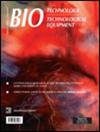液体活检:一种创新而可靠的方法,不仅可以检测结直肠癌和非小细胞肺癌患者的体细胞突变,还可以检测种系突变
IF 1.4
4区 生物学
Q4 BIOTECHNOLOGY & APPLIED MICROBIOLOGY
引用次数: 1
摘要
液体活检是一种从循环无细胞DNA (cfDNA)中检测癌症相关突变的非侵入性方法,已成为传统组织活检的一种有前途的替代方法。然而,到目前为止,它的用途仅限于检测癌细胞中的体细胞突变。本研究利用高度先进的非侵入性液体活检技术,检测了19例结直肠癌患者和12例非小细胞肺癌患者与药物遗传学相关的种系突变,随后进行了下一代测序进行全面分析。尽管考虑的患者样本量相对较小,但我们的结果表明,不良反应的存在与已确定的种系突变之间存在显著的相关性。我们已经确认以下变异对药物基因学也产生了重大影响:MTHFR c.1286A > C, MTHFR c.665C > T, DPYD c.2194G >, DPYD c.85C > T, XPC c.2815C >,人民运动联盟c.638G > C, SLC22A2 c.808T > G, EGFR c.1562G >, ABCB1 2677 T > G, GSTP1 c.313A > G, ERCC2 c.2251A > C和SLC19A1 c.80A > G .此外,我们观察到各种药品不良反应在我们的病人群体,包括myelosuppression、肝毒性、神经毒性和胃肠道毒性。液体活检有可能通过检测体细胞和种系突变来彻底改变癌症的诊断和治疗。生殖系突变研究的初步结果是有希望的,但需要进一步的研究来解决剩下的挑战,并建立液体活检作为生殖系突变可靠诊断工具的实用性。本文章由计算机程序翻译,如有差异,请以英文原文为准。
Liquid biopsy: an innovative and reliable method for detecting not only somatic, but also germline mutations in patients with colorectal and non-small cell lung carcinoma
Liquid biopsy is a non-invasive method of detecting cancer-related mutations from circulating cell-free DNA (cfDNA) and has emerged as a promising alternative to traditional tissue biopsies. However, its utility has so far been limited to the detection of somatic mutations in cancer cells. Our study examined germline mutations that are associated with pharmacogenetics in 19 patients diagnosed with colorectal cancer and 12 patients with non-small cell lung carcinoma, utilizing the highly advanced and non-invasive technique of liquid biopsy, followed by subsequent next-generation sequencing for comprehensive analysis. Despite the relatively modest sample size of patients under consideration, our results indicated a noteworthy correlation between the presence of adverse effects and the identified germline mutations. We have identified the following mutations with significant implications for pharmacogenetics: MTHFR c.1286A > C, MTHFR c.665C > T, DPYD c.2194G > A, DPYD c.85C > T, XPC c.2815C > A, UMPS c.638G > C, SLC22A2 c.808T > G, EGFR c.1562G > A, ABCB1 2677 T > G, GSTP1 c.313A > G, ERCC2 c.2251A > C, and SLC19A1 c.80A > G. In addition, we observed various adverse drug reactions in our patient cohort, encompassing myelosuppression, hepatotoxicity, neurotoxicity and gastrointestinal toxicity. Liquid biopsy has the potential to revolutionize cancer diagnosis and treatment by detecting both somatic and germline mutations. The preliminary results of studies on germline mutations are promising, but further research is needed to address the remaining challenges and to establish the utility of liquid biopsy as a reliable diagnostic tool for germline mutations.
求助全文
通过发布文献求助,成功后即可免费获取论文全文。
去求助
来源期刊

Biotechnology & Biotechnological Equipment
工程技术-生物工程与应用微生物
CiteScore
3.10
自引率
0.00%
发文量
90
审稿时长
1 months
期刊介绍:
Biotechnology & Biotechnological Equipment (B&BE) is an international open access journal publishing cutting-edge research. A modern world requires modern biotechnology and nanobiology. The journal is a forum that provides society with valuable information for a healthy and better life and promotes “the Science and Culture of Nature”.
The journal publishes original research and reviews with a multidisciplinary perspective; expanded case reports with a focus on molecular medical research and advanced practice in evidence-based medicine are also considered.
 求助内容:
求助内容: 应助结果提醒方式:
应助结果提醒方式:


